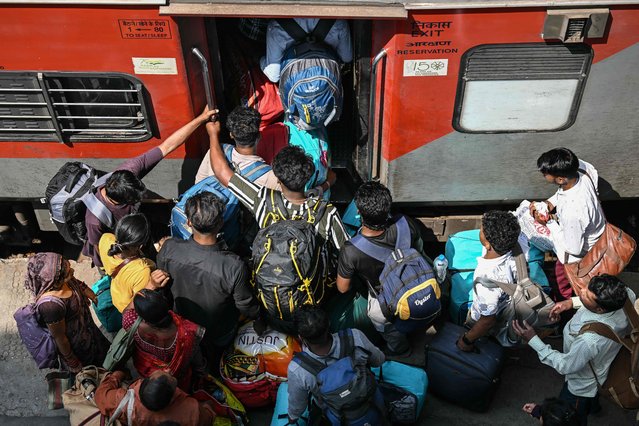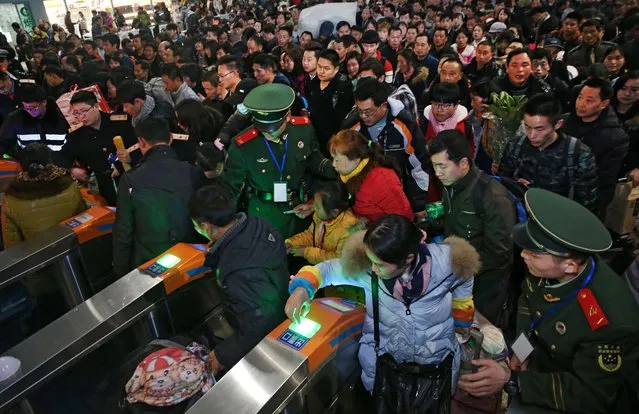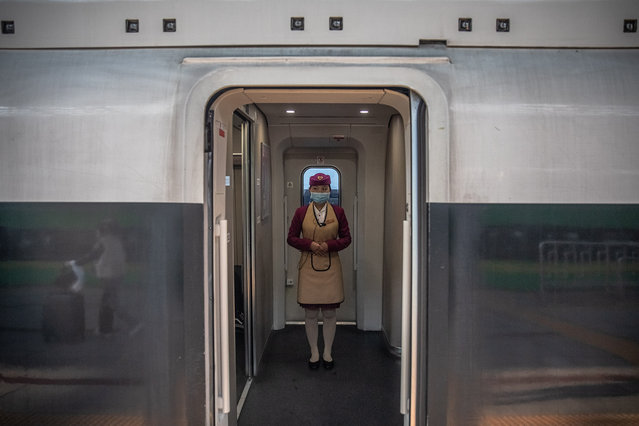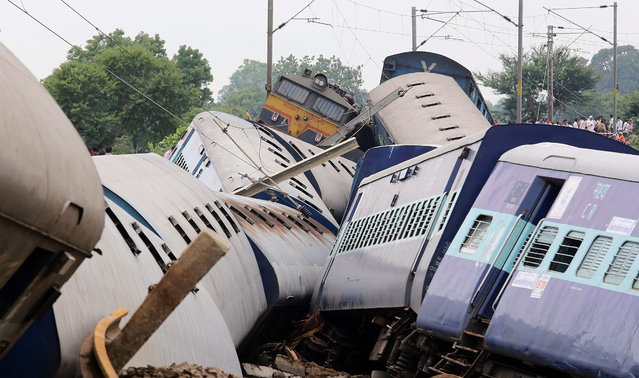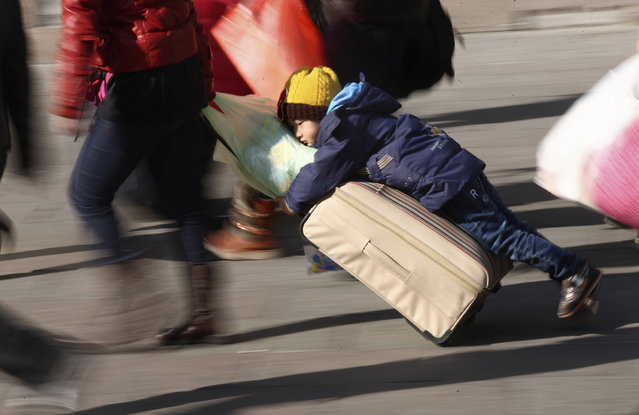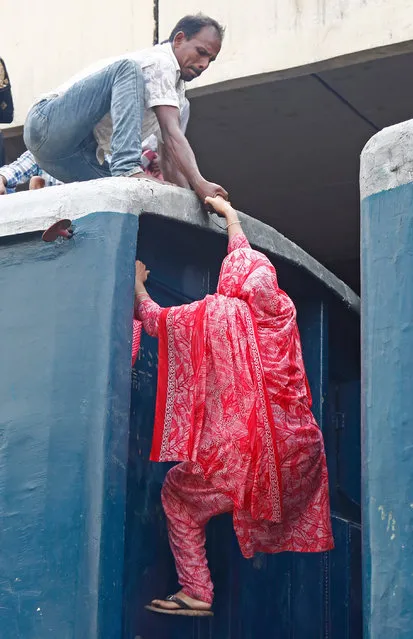
Bangladeshi people climb into the roof of an overcrowded train as they travel to celebrate Eid with family in their villages, at the Kamlapur Railway Station in Dhaka, Bangladesh, 03 June 2019. Muslims around the world are preparing to celebrate Eid al-Fitr, the three-day festival marking the end of the Muslim holy month of Ramadan, Eid al-Fitr is one of the two major holidays in Islam. (Photo by Monirul Alam/EPA/EFE)
05 Jun 2019 00:07:00,post received
0 comments

